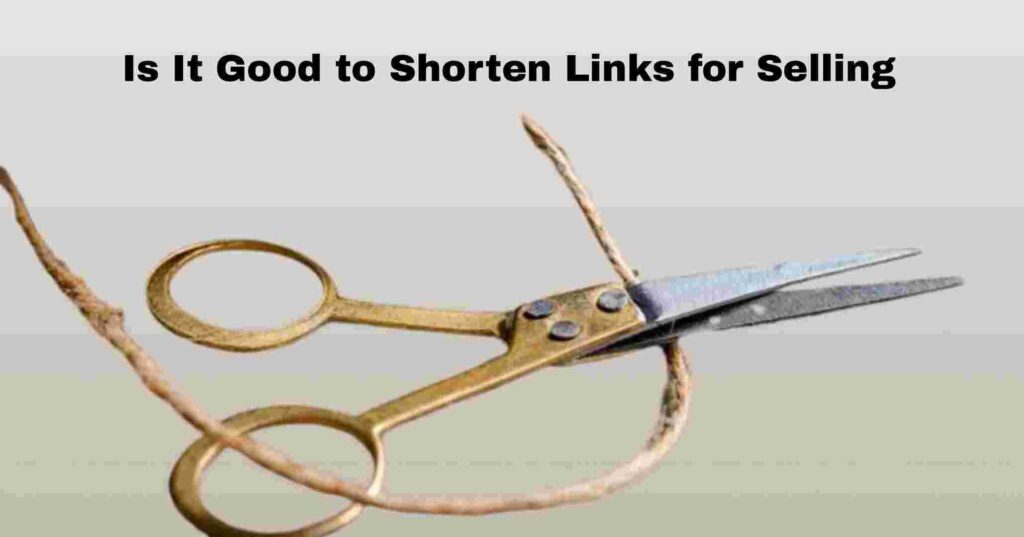In today’s digital marketing landscape, the way you share your links can significantly impact your sales and engagement. Many marketers and sellers wonder whether shortening links is a beneficial strategy for boosting sales. This article explores the question: Is it good to shorten links for selling? We will examine the advantages, potential drawbacks, best practices, and how to effectively incorporate link shortening into your sales strategy.
Understanding Link Shortening and Its Purpose
Link shortening is a process that converts a long, cumbersome URL into a shorter, more manageable link. Tools like Bitly, TinyURL, and others are popular for this purpose. The main goal of shortening links is to make them easier to share, especially on platforms with character limits like Twitter, or in printed materials where space is limited. For sellers, shortened links can also enhance the visual appeal and improve click-through rates.
Benefits of Shortening Links for Selling
Improved Visual Appeal and Trust
Long URLs can look cluttered and unprofessional. Shortened links create a cleaner appearance, which can make your marketing materials look more credible and appealing. When a link looks tidy, users are more likely to click on it, increasing the chances of conversions.
Enhanced Tracking and Analytics
Most link shortening tools provide tracking features, allowing you to monitor how many clicks your links receive, their geographic location, and the devices used. This data helps you analyze your audience’s behavior and optimize your sales strategies accordingly.
Easier Sharing on Social Media and Messaging Platforms
Social media posts and messages have character limits. Shortened links save space and make your message look neat. They also reduce the risk of broken links when sharing across various platforms, ensuring your potential customers reach the intended landing page.
Increased Click-Through Rates
Short links tend to be more clickable because they appear less intimidating and are easier to remember or share. This can lead to higher engagement and ultimately, more sales.
Potential Drawbacks of Shortening Links
Reduced Transparency and Trust
Some users may be wary of clicking on shortened links because they can’t see the destination URL. They might suspect malicious sites or spam, which can reduce click-through rates unless users trust your brand.
Dependence on Third-Party Services
Relying on external link shorteners means you’re subject to their service stability. If the service experiences downtime or is discontinued, your shortened links could become broken or inaccessible.
Possible Use in Malicious Activities
Shortened links are often used in phishing scams or malware distribution, which can harm your brand’s reputation if your links are misused or associated with malicious activities.
Limited SEO Benefits
While shortened links help with click tracking, they do not directly contribute to your website’s search engine rankings. They are primarily tools for sharing and tracking, not for SEO optimization.
Best Practices for Using Shortened Links in Selling
Use Reputable Link Shortening Services
Choose well-known and trusted link shorteners like Bitly or Rebrandly. These services offer reliable tracking, branding options, and security features to ensure your links are safe and professional.
Customize Your Short Links
Many services allow customizing the latter part of the URL. Personalizing links with relevant keywords makes them more recognizable and trustworthy, encouraging clicks.
Combine Short Links with Clear Call-to-Actions
Always pair your links with compelling calls-to-action (CTAs). For example, “Get your discount now” followed by a shortened link makes it clear what users should do.
Monitor and Analyze Link Performance
Regularly review your link analytics to understand what works best. Use this data to refine your marketing strategies and improve your sales results.
Maintain Transparency
Whenever possible, inform users about the destination of the link or use branded short domains that reinforce your brand identity. This builds trust and increases click-through rates.
When to Avoid Shortening Links
While link shortening can be beneficial, there are situations where it might be better to avoid it:
- When building trust with an audience unfamiliar with your brand, as shortened links can seem suspicious.
- In SEO campaigns where direct links with optimized URLs are more effective.
- When sharing links in environments where users may be wary of URL redirection, such as professional or security-sensitive contexts.
Conclusion: Is It Good to Shorten Links for Selling?
In summary, shortening links can be a powerful tool for enhancing your selling efforts if used correctly. It improves the visual presentation, makes sharing easier, and provides valuable tracking insights. However, it is essential to consider the potential trust issues and dependence on third-party services.
To maximize benefits, use reputable, customizable shortening tools, combine links with clear CTAs, and maintain transparency with your audience. When integrated thoughtfully into your marketing strategy, link shortening can lead to increased engagement, higher click-through rates, and ultimately, more sales.
Final thought: Whether you’re sharing on social media, in email campaigns, or printed materials, leveraging the power of shortened links can be a game-changer for your sales success. Just remember to prioritize trust and clarity to ensure your audience feels confident clicking on your links.


